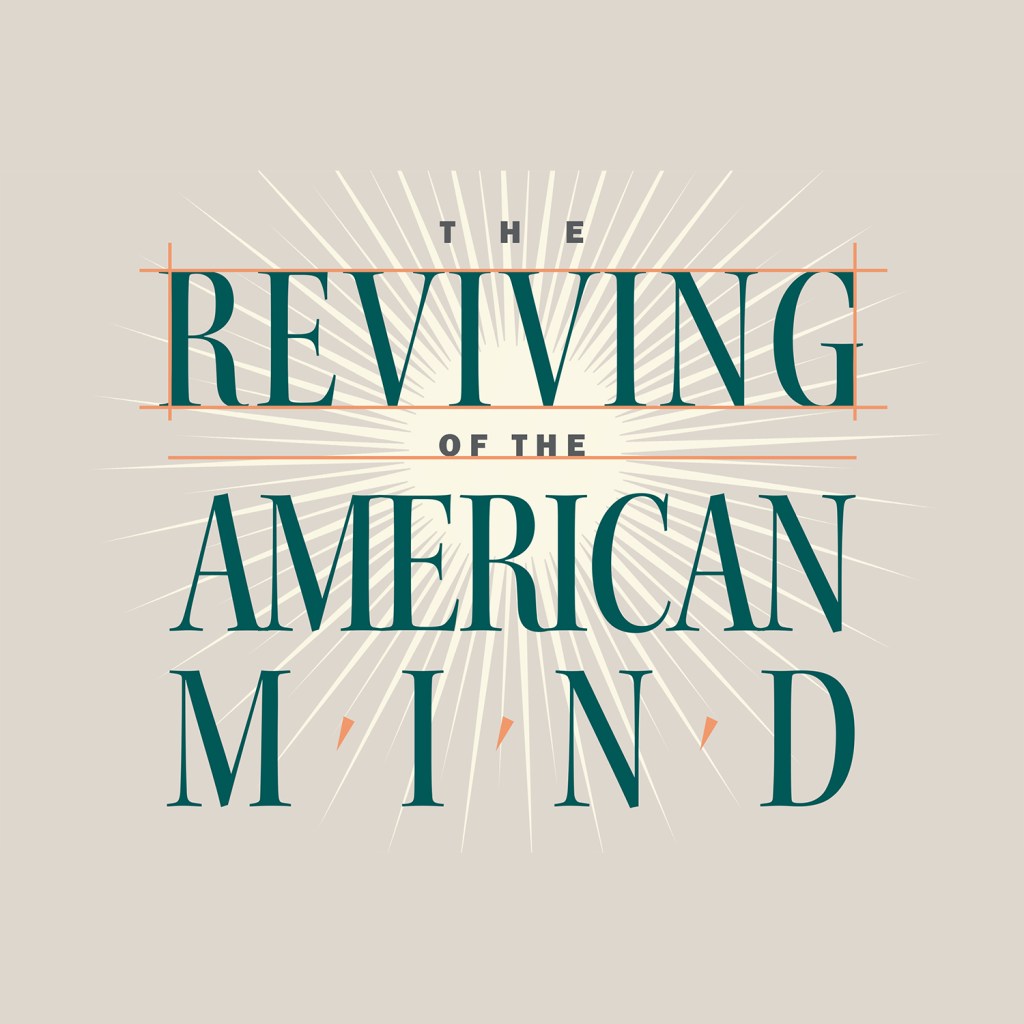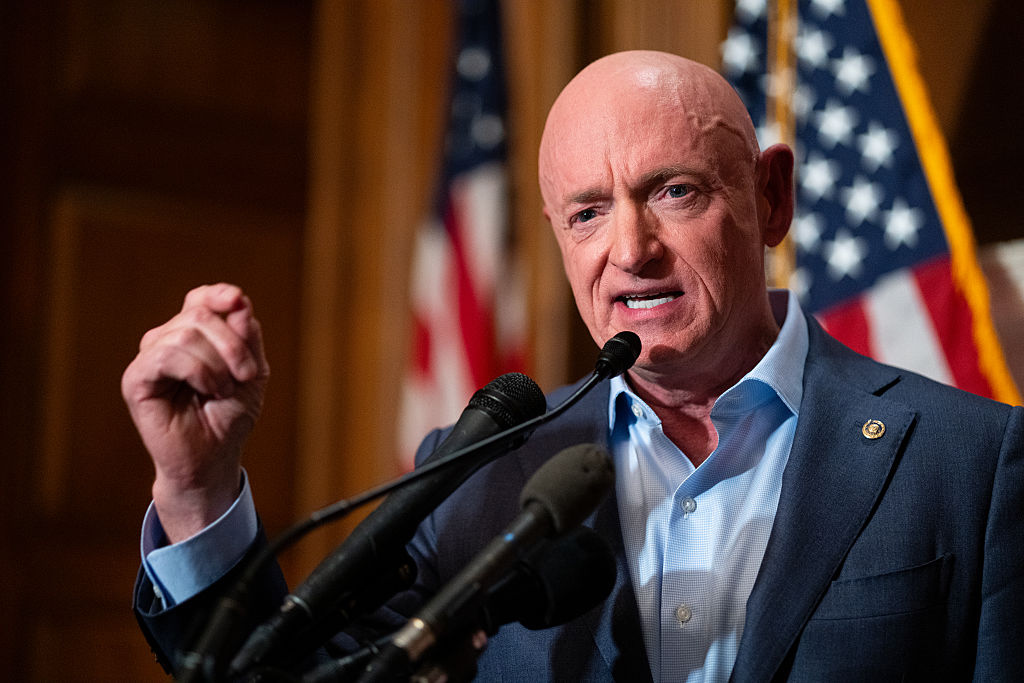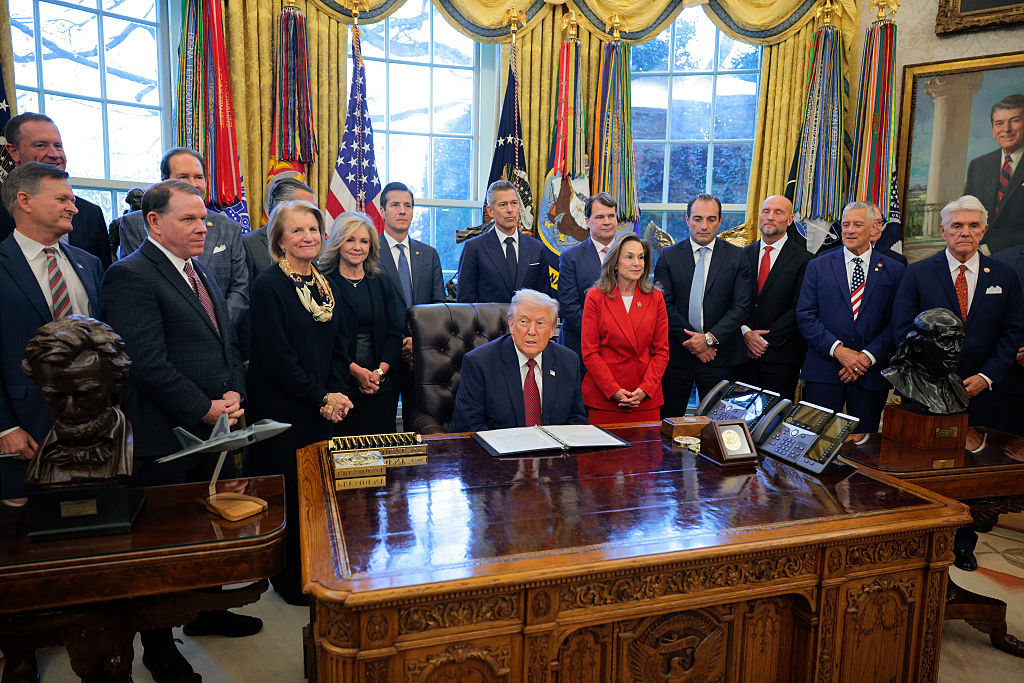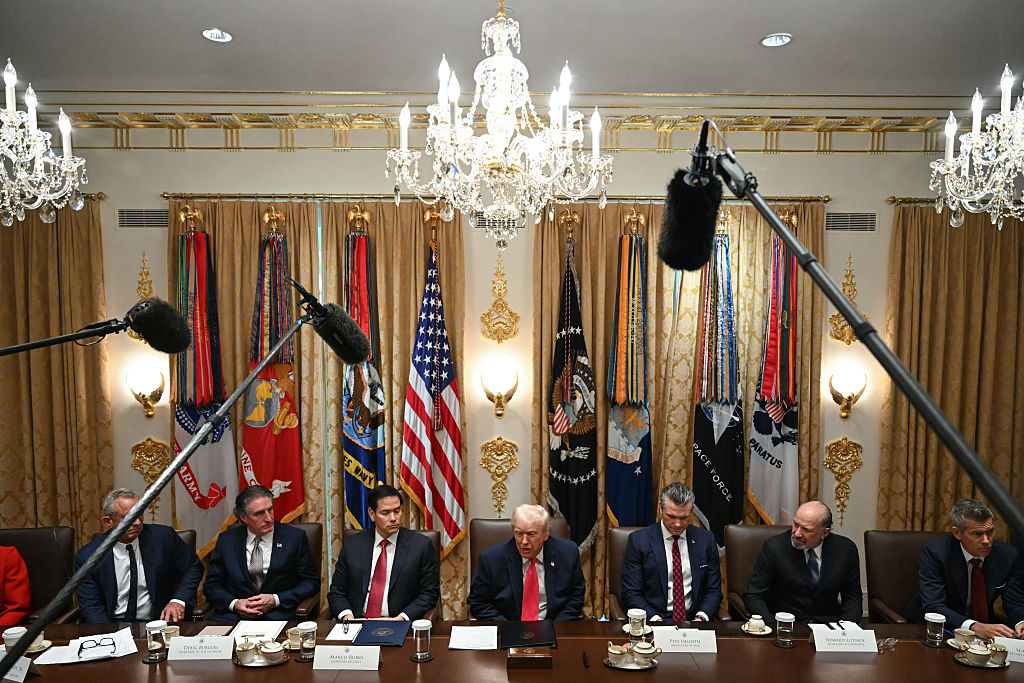Americans are not a naturally gloomy people. We don’t necessarily expect things to go our way, but when they don’t, we can laugh it off. In my part of Vermont there’s a place called Hateful Hill, for example, so-named by stagecoach drivers who had a tough time with the steep road. But Hateful Hill is also a beautiful elevation.
Today, even those who don’t “get” Donald Trump need to start seeing the upside. He doesn’t always get his way, which is probably a good thing, but he is leading a long-overdue revival of the American spirit and allowing for the return of optimism and the pursuit of excellence.
Among the 130 executive orders (EOs) Trump has issued so far are eight that pick away at the Diversity, Equity and Inclusion (DEI) regime that had settled on the American psyche like volcanic ash. One of those EOs, #14151, “Ending Radical and Wasteful Government Programs and Preferencing,” directs federal agencies to terminate grants and contracts for programs that advance DEI. That includes universities that have entangled their research with the ideology that science, along with everything else, is riddled with “systemic racism.”
EO #14173, “Ending Illegal Discrimination and Restoring Merit-Based Opportunity,” bans DEI efforts in the federal government and among federal contractors, e.g. universities. EO #14190, “Ending Radical Indoctrination in K-12 Schooling,” ends federal funding for schools that teach DEI and calls instead for programs that “instill a patriotic admiration for our incredible Nation and the values for which we stand.”
Executive orders are not magic wands that instantly transform reality. Schools, colleges and associations that are committed to DEI fight back. But the EOs have galvanized a broad swath of Americans who detest the DEI regime but until now have felt helpless to fight against it.
In higher education, my professional area, colleges and universities are in a fit of distemper because President Trump has come down on them hard for their coddling campus Hamas activists and their recently exposed institutional anti-Semitism.
Trump has successfully linked their anti-Semitism to their neo-racist DEI programs, the politicization of their curricula and various forms of duplicity. The volume of wailing that we hear from Harvard and the 200 or so university presidents who have joined in chorus sounds as though all the residents of Brimstone Corners and Misery Lanes have united in anguish.
Don’t be misled by that institutional chorus. Americans are generally smiling at this drama. We know that Trump doesn’t intend to plow Harvard back to the colonial cow pasture it once was. His “war on Harvard” is, in fact, rather a sunny fable about the usurpers facing an overdue reckoning.
The ascendancy of DEI in higher education didn’t happen all at once. Racial preferences were first framed as “affirmative action” in the early 1960s, but were challenged in a series of court cases that culminated with the 1978 Supreme Court case, University of California v. Bakke, where the court ruled that, while racial preferences were an illegal form of discrimination, the pursuit of “diversity” may, under “strict scrutiny,” be legitimate. Thus was born the D in DEI. The court cases kept coming and so did ever more ingenious rationalizations. In 2003, the Supreme Court handed down the decision, in Grutter v. Bollinger, that enshrined the “diversity” principle in more robust law. Around the same time, diversiphiles began to speak more emphatically about “equity” and “inclusion” as necessary extensions of diversity.
Diversity gerrymandering, however, never delivered on its promises. Students admitted with lower grades and lower test scores consistently underperformed students with higher grades and higher test scores. Imagine that.
DEI is a kind of acid that dissolves whatever educational standards it encounters. Its presence in higher education has helped to lower standards for reading, writing, history and foreign-language study because these too can be obstacles for students who do not measure up under traditional standards.
Harvard, for instance, has established a “pilot program” to teach foundational algebra to students. Algebra is traditionally taught in eighth or ninth grade in the US. That one of our most elite institutions has found the need to teach remedial math – on a five-day per week schedule – is appalling.
But this decline is not inevitable and it isn’t a fact of nature. It is the result of deliberate decisions, promoted in schools of education and among teachers, to prioritize low standards of intellectual performance on the part of students. Were we to move out of the “go slow” DEI lane and on to the highway of traditional standards, everyone, including minority students, would do much better.
Another of Trump’s EOs, “Removing Barriers to American Leadership in Artificial Intelligence,” points to a route by which we can get back on track for educational achievement. Many teachers are, of course, alarmed that AI could undermine academic discipline. But AI, done right, can bypass the educationalists who swaddle their students in the banalities of “anti-racism” or the fairy tales of the 1619 Project. AI and the access it brings to great teaching may be our best hope of restoring human genius following an age of educational mediocrity. And it can cheer us all up along the way.
In the 1950 movie Summer Stock, Judy Garland performs a number which opens with six or seven dark-suited men collapsing in despair. As the last of them falls, Garland (with fedora and magnificent stockinged gams) sings:
Forget your troubles, come on get happy You better chase all your cares away Shout "hallelujah," come on get happy Get ready for the judgment day.
Naturally, she resurrects all those defeated men. Getting happy again, it seems, is the key to revival.
“American nihilism is a mood; a mood of moodiness; a vague disquiet. It is nihilism without the abyss,” wrote Allan Bloom in 1987’s The Closing of the American Mind. Enough of the age of neurosis, nihilism and negation. Our obsession with relativism and horror of our own culture is what created the gloom, so let’s dispel it with the great treasures of western civilization – music, literature, dance.
Beauty and wisdom should be at the heart of the arts and entertainment but for too long we have ceded these commanding heights to narcissists and cultural engineers. Think of Disney’s new Snow White; think of the banana duct-taped to a wall that sold for $6.2 million; think of the loss of the great musical traditions. And then think of President Trump taking control of the Kennedy Center and seeking the resumption of neoclassical architecture for government buildings. His tastes may not always be highbrow, but we know Trump is on the side of artistic excellence and opposed to pretentious sham.
The good news is that our appetite for culture seems to be returning. America is in the midst of a renaissance in education. About 3.7 million children in the US were homeschooled in the last school year – almost 7 percent of the school-age population. About 677,500 were enrolled in the nation’s 1,551 classical schools, which are proliferating. Thirty-three states have passed “school choice” legislation which permits parents to opt out of the dreary government schools. Texas just joined the list with the passage of a bill that allocates $1 billion to a private-school voucher program.
None of this means children spared the ordeal of public school will grow up reading (let alone memorizing) great poetry or cultivating a taste for Mozart or Mahler, but their chances are much improved.
Do we have Trump to thank for this? I know quite a few people who have been laboring in this vineyard for years, but it’s Trump who has begun the battle to end our public-school obsession with “trans-ing” children, which exposes them to propaganda and destroys their faith in their own culture. Suddenly the idea is out there that we do not have to bow down to the teachers’ unions and the false gods of inclusion.
Are we getting happy yet? We’re only getting started. Now that we don’t have to accept the idea that our culture is irredeemably racist, we can rejoice in the fact that finally, 61 years after the passage of the Civil Rights Act, we are on the verge of something like racial amity. Generations of race-hustlers have come and gone, seeking to foment racial division. They’ll no doubt try again. It is a lucrative scam. But the American people have grown wise to it. We’re sick of perpetual grievance.
Are there still clouds in our sky? For sure. But even on climate hysteria, Americans are awakening from the delusion. The world’s temperature and weather patterns are never stable but the variations we have experienced in the past few centuries are well within the norms of the last several thousand years – during which humanity created civilization. Ending climate hysteria permits us to enjoy the natural abundance of our planet. We can enjoy the energy abundance that our continent provides and the energy independence that is within our reach. Drill, baby, drill.
The egregious, power-grabbing, and pseudoscience-promoting Environmental Protection Agency is being cut down to size. The public gets the idea, which is why the US population is fleeing the blue states to the less-regulated red ones. Global trade became a fool’s paradise when we made ourselves dependent on the goodwill of adversaries such as China. Trump is trying to tariff our way out of these foolish dependencies.
Happy yet? I haven’t even gotten to the restoration of a positive national identity. Patriotism is back in style and recruitment to the military is soaring, too. People actually want to join a military that wants to be a fighting force. Having secure national borders is something that the vast majority of Americans celebrate. We don’t want to be dissolved in a borderless global nebula. We have a distinct history, culture and collective identity. We are tired of being told that we are “a nation of immigrants,” as though that means anyone can come here at any time for any reason. No, we are a nation of citizens – and citizenship means something. And English, by the way, is now our official language. Trump made it so by executive order on March 1.
Public recognition of our positive history means protecting our national monuments rather that spray-painting them or tearing them down. It means honoring our heroes, including Washington, Jefferson and Lincoln. If we don’t, elevating others is an empty gesture.
America is a nation that loves its native liberties and given a government that protects them, we can be happy indeed. Protecting liberty requires some hard steps. We have to assure the integrity of elections. We can’t excuse rioting and lawlessness as “peaceful protest.” We can’t “defund the police” or define criminality out of existence. We can’t allow our major cities to ruin themselves through misgoverning. We need to get control of government agencies that have surreptitiously abandoned their vital missions to become illicit political actors.
But we can face up to these problems with confidence. That’s what the Trump regime has offered, and many of us like it. Trump is not a flawless leader. But in his new term he has crested Mount Hunger and summited Mount Horrid. Hateful Hill is now a scenic overlook. We may not be in a golden age, but we can see one on the horizon.
This article was originally published in The Spectator’s June 2025 World edition.























Leave a Reply